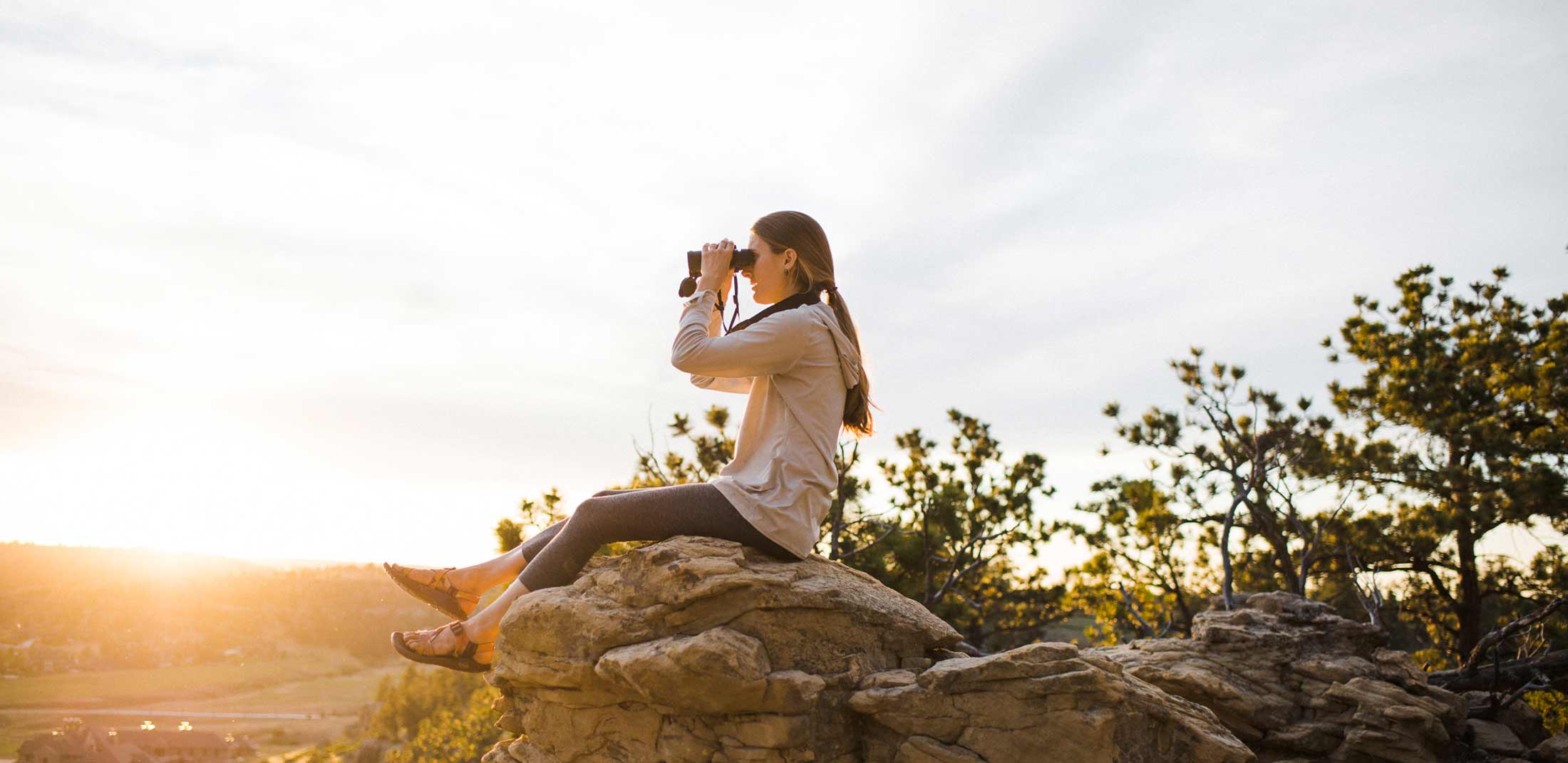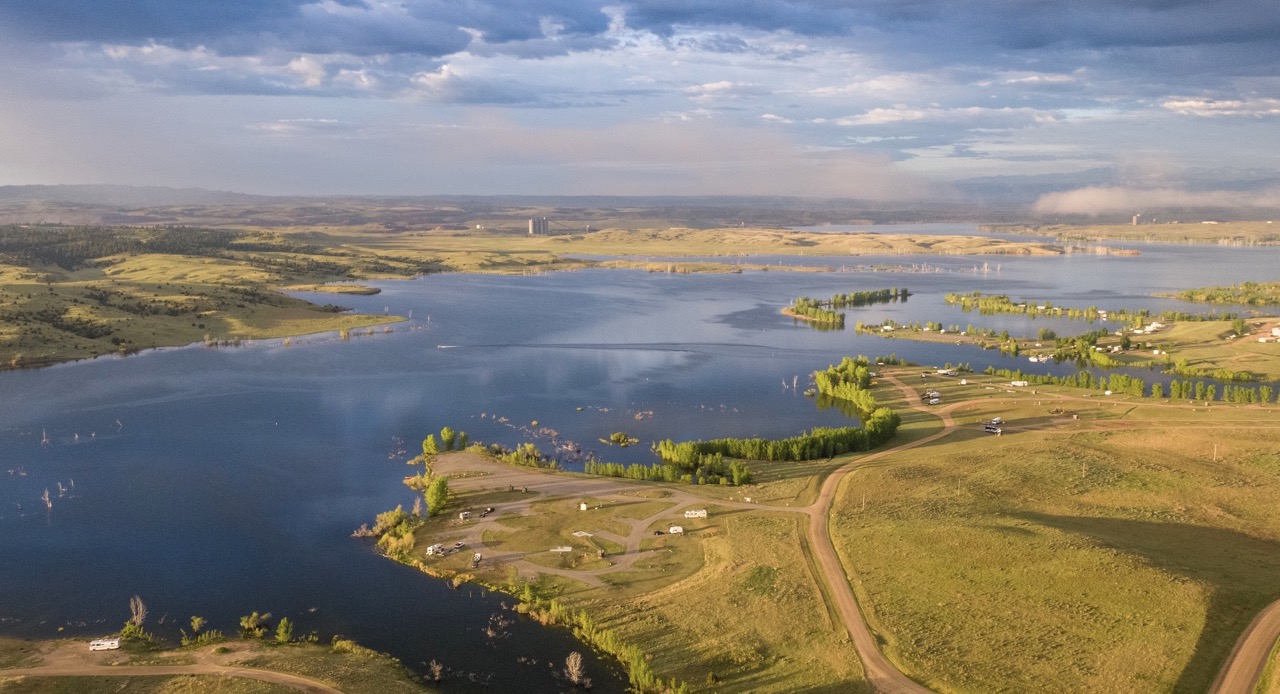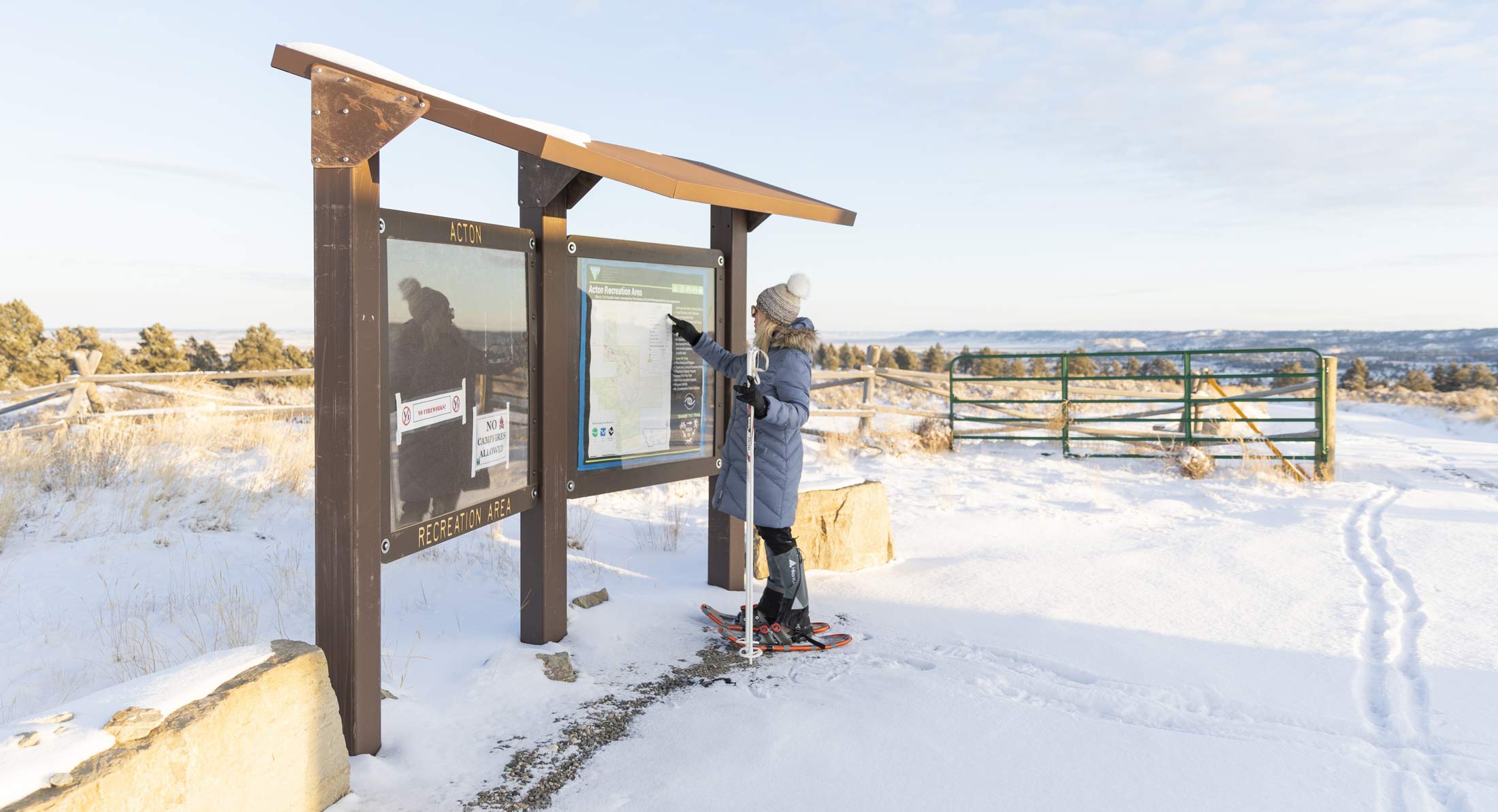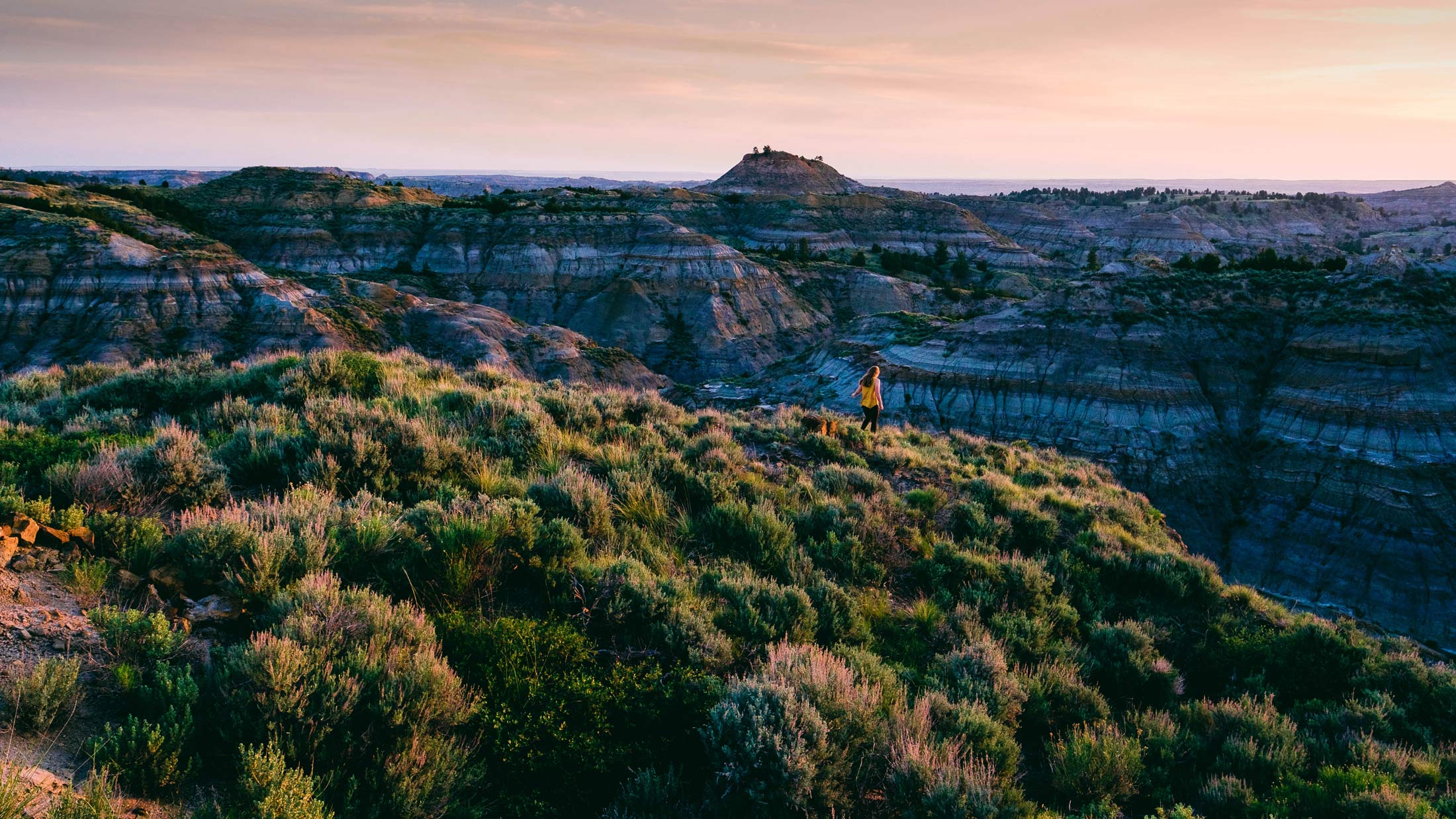Eye on the Sky: Birding in Southeast Montana
High above us, birds catch our imagination as they soar across the sky. Southeast Montana is a popular spot for birding, and with good reason. Hundreds of bird species have been observed in Montana. With fall migration starting, we spoke with Becca Mathias and Alina Garner of the Montana Audubon Center to get all your birding questions answered.
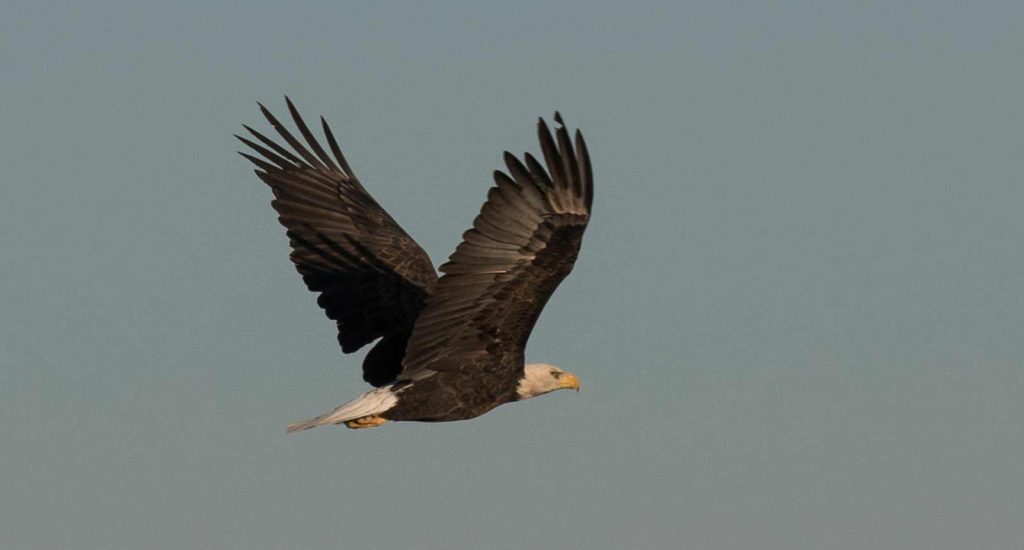
When is the best time to go?
Fall and spring are great times to see a wide variety of birds. Fall migration stretches from September to mid-October. Spring migration in Southeast Montana goes from late April to early June. Morning is a particularly good time of day to go because the birds are often vocal at that time. Mathias and Garner recommended anytime between 6:30- 10:30 a.m.
What should I take?
- Binoculars. They recommend something with a magnification of at least eight. Look for 8 x 42.
- Spotting scope for serious birders
- An app or book to help identify birds. They particularly recommend the Merlin Bird ID app (free) or the Sibley Bird App ($19.99). The Birds of Montana Field Guide by Stan Tekiela is a good option if you prefer a book.
- Hat, sunscreen and bug spray.
- Boots with warm socks as weather gets colder.
- Backpack with water and a journal.
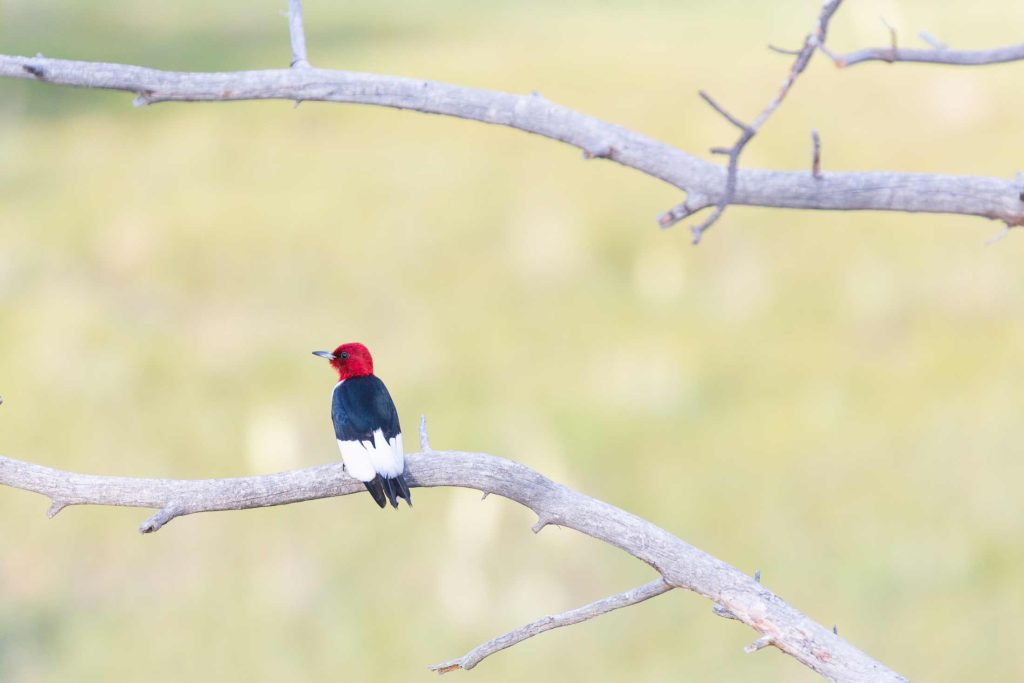
What birds can I expect to see?
Common birds in the Southeast Montana region include black-capped chickadee, downy woodpecker, bald eagle, cedar waxwing and great blue heron. Birds that are commonly seen during migration include yellow warbler, lazuli bunting, black-headed grosbeak, tree swallow and sandhill crane. Less common species that can be seen during migration include plumbeous vireo, MacGillivray’s warbler, field sparrow, orchard oriole and upland sandpiper.
There are four flyways in the United States for migrating birds. Most of Montana is part of the Central Flyway. The west side of the state is part of the Pacific Flyway. Having two flyways in the state means a great variety of species fly through Montana.
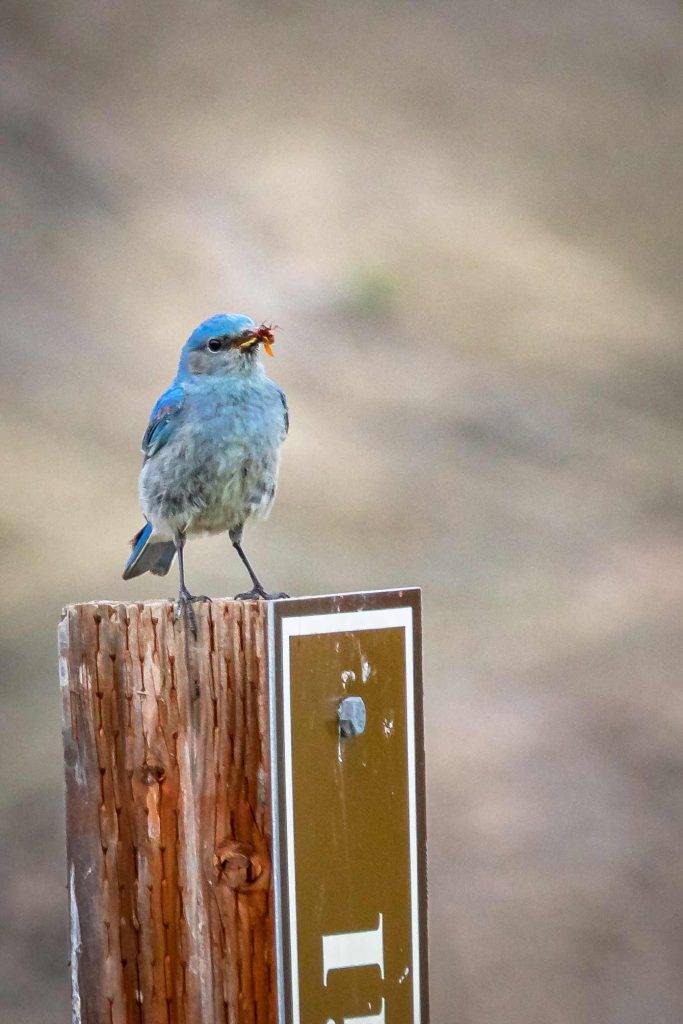
How are birds identified?
Mathias and Garner said they tell people to watch for the following when they are trying to identify a bird:
- Size/shape
- Color/pattern
- Behavior
- Habitat
Where should I go?
Mathias and Garner said they typically go birding at city parks, state parks or Bureau of Land Management (BLM) land. You can also check out the birding hotspots identified here. Different landscapes will attract different species. Around Billings, they recommended Riverfront Park as a hotspot for diversity. Four Dances Recreation Area has rocky outcroppings, sage, and water, which will attract different birds than Shiloh Conservation Area with its wetland and marsh habitat. Good spots to try including the RiverWalk in Roundup, Powder River in Broadus, Pirogue Island State Park, Amelia Island Wildlife Management Area, Isaac Homestead Wildlife Management Area and Intake Dam Fishing Access Site near Glendive.
While you are out working up an appetite between stops, check out our mouthwatering Southeast Montana Burger Trail.
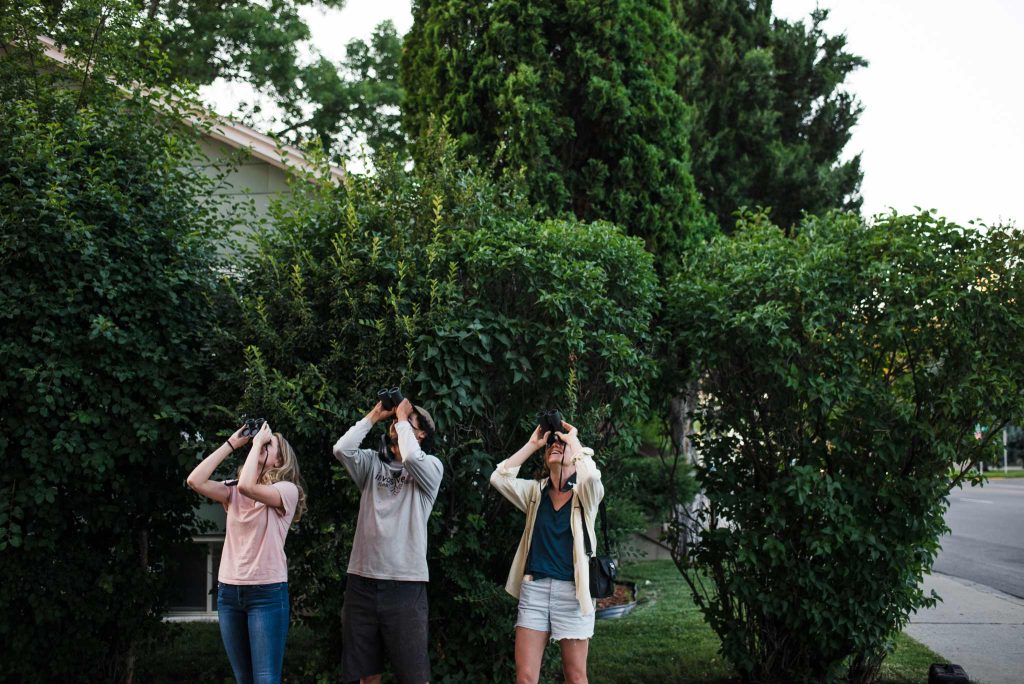
How can I connect with other birders?
Mathias and Garner recommended going to ebird.org. It’s a citizen scientist website where people can enter their bird lists into a global database. The website will also pull up a list of hot spots in your area.
What else should I know?
There are 42 Important Bird Areas (IBA’s) in Montana as designated by the Montana Audubon. Mathias and Garner said these areas are typically important for breeding or something similar. They are also great spots to see a lot of bird diversity. In Southeast Montana, IBA’s include the Tongue River and the Powder/Carbon Sage-steppe. Lastly, while many birds migrate, many others do not or simply winter in Southeast Montana – and they are easier to spot with a white background. So, be on the lookout for avian friends year-round.
More from our blog:
